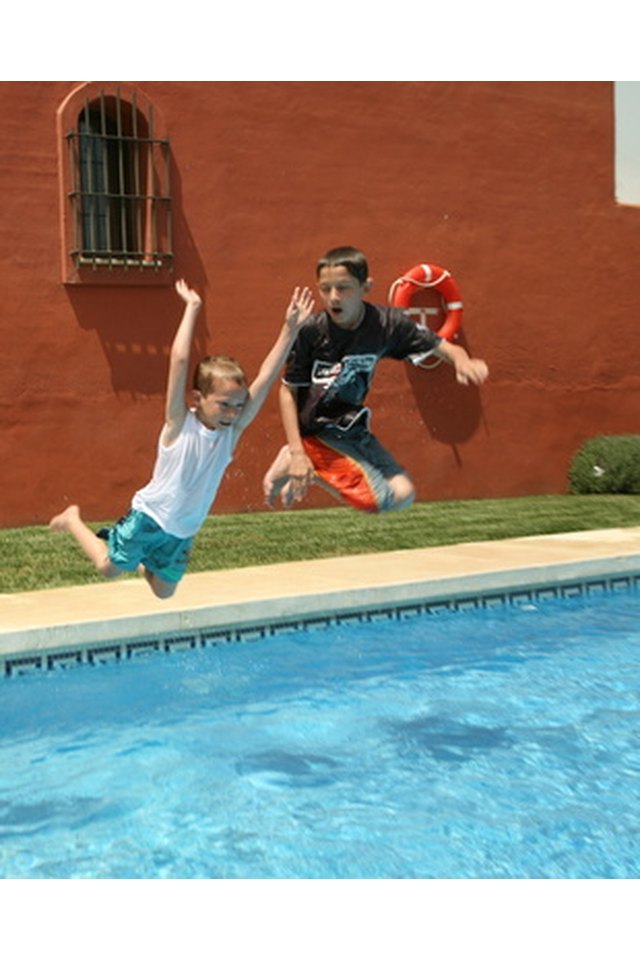What does fact checked mean?
At SportsRec, we strive to deliver objective content that is accurate and up-to-date. Our team periodically reviews articles in order to ensure content quality. The sources cited below consist of evidence from peer-reviewed journals, prominent medical organizations, academic associations, and government data.
The information contained on this site is for informational purposes only, and should not be used as a substitute for the advice of a professional health care provider. Please check with the appropriate physician regarding health questions and concerns. Although we strive to deliver accurate and up-to-date information, no guarantee to that effect is made.
Swimming & Life Saving Skills

Despite the fact that an American Red Cross survey found 50 percent of those asked had experienced a drowning scare, almost two-thirds planned to swim during their summer vacation with no lifeguard present. Basic swimming techniques and lifesaving procedures can help even untrained swimmers and rescuers improve water safety.
Talk, Reach, Throw, Row, Go
Even if you are an experienced swimmer or trained lifeguard, it's best not to enter the water to perform a rescue except as a last resort. A common water safety phrase taught to both swimmers and lifeguards is, "Talk, reach, throw, row, go," to signify the order to follow in rescue attempts. Talk to a victim first to help them get to shore, to a pier, a boat or the side of a pool if they are calm enough. Reach for them with your hand, a pole or other object if they are near and there is little or no danger of them pulling you in. Throw a life preserver or rope so you can pull them in. If they are in a lake or the ocean and not close by, look for a rowboat, canoe, jet ski, rubber raft or other floating device you can use before you swim out to them. Enter the water and attempt the rescue yourself if none of the other options is viable.
Dog Paddle
More than 20 percent of drowning victims are under the age of 14, with four times that many needing emergency department care from water accidents, according to the Centers for Disease Control and Prevention. Many children die in shallow water and close to shore or a boat. If you are not a qualified swimming instructor, help your child learn the simple dog paddle. This might allow her to stay above water, calling for help for a few critical moments after falling in or making it to safety. The simplest way to teach the dog paddle is in shallow water. Have children stand in stomach- or chest-high water while they learn the hand motion. This resembles pulling water toward you, or pushing the water straight down. Next, have them hold on to the side of the pool, facing down, and have them move their legs as if they were pedaling a bike. Combine the movements by having them stand up and begin paddling their hands. As they tilt their head backward, try to take their feet off the bottom and begin pedaling while staying afloat. Keeping the head back is a key to staying afloat.
Learning to Swim
One of the easiest ways to learn to swim is with the use of a kickboard, a flat, buoyant short board you hold in front of you at arms' length as you lie forward and learn to swim. Practice your leg kick first by placing your hands on the side of a pool as you lie forward, gently kicking your legs with a relaxed knee bend. Try to kick vigorously without splashing water to get the feel for the correct, firm but gentle leg movement. After you can keep yourself horizontal on the water using your leg kick, begin practicing with the kick board, moving along the pool's side, staying in the shallow end. Swim fins help beginner swimmers move faster, helping them stay on top of the water. Even when practicing in shallow water, organizations like the United States Lifesaving Association recommend swimming with a friend or having someone capable in the water present.
References
Resources
Writer Bio
Sam Ashe-Edmunds has been writing and lecturing for decades. He has worked in the corporate and nonprofit arenas as a C-Suite executive, serving on several nonprofit boards. He is an internationally traveled sport science writer and lecturer. He has been published in print publications such as Entrepreneur, Tennis, SI for Kids, Chicago Tribune, Sacramento Bee, and on websites such Smart-Healthy-Living.net, SmartyCents and Youthletic. Edmunds has a bachelor's degree in journalism.
